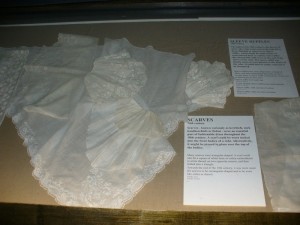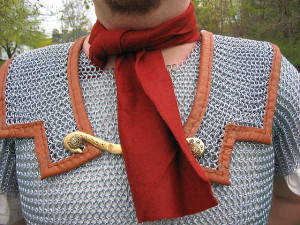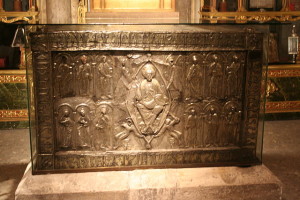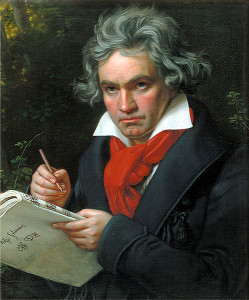Scarves have a long and colorful history which stretches back at least to the ancient Egyptians of 1350 BC, when, it is said, Pharaoh Akhenaten’s Queen Nephratiti wore a silk scarf under her head-dress. The scarf also appears quite regularly in ancient China, where it is worn by soldiers, and found depicted in sculptures created in the centuries between Akhenaten’s reign and the life of Jesus Christ.
Scarves have played a varied role in human history, designating military rank and social status as well as being significant in public customs and rituals. In ancient Rome scarves were used for all of these purposes. By the middle ages scarves were commonly worn as decorative fashion.
During the 13th century as belly dancing was adopted in Egypt as a new form of dance, the scarf played an important role in the costume of the dance.
The Word Scarf
The word scarf has several distinct lineages and meanings from both old French ‘escherpe’ which it is suggested derives from the Latin “scirpa”. And the old Norse word ‘scarfr’. The two words have very different meanings, and it is not clear how, or if, they were connected.
The various forms of ‘escherpe’ have meant ‘sash’, ‘purse’ or ‘strap with a small purse’ in different languages over the ages.
The Norse word, ‘skarfr’ which is also found in various forms of old German, Dutch and Latin, and described a nail used for fastening joints in ship building.
Interestingly, the German word for scarf today is Schal; which more closely corresponds to the English word ‘shawl’; a word not introduced into English until much later (c. 1660’s) as a particular type of scarf from the Middle East.
The first recorded use of the word scarf as a covering around the neck to protect from the cold is said to be dated c. 1844.
Other Ancient Words Meaning “Scarf”, or “Small Cloth”
The Focale and the Sudarium
In ancient Rome, the soldiers are often depicted wearing what was known as a focale, a small cloth worn around the neck to protect against chafing by armor. It was normally a linen or woolen cloth and is depicted widely in military scenes in art of the period. The cloth is worn around the neck and tied in the front, with the ends left hanging or tucked into the top of the suit of armor.
The focale and the sudarium were described in papyrus writings dated to 350 to 450AD as synomymous items of military clothes. It has been seen as the precursor to the necktie, and some one thousand years after the papyrus writings, Cesare Vecellio likened it to the cravat in his book on the history of fashion.
The sudarium (“sweat cloth”) was typically carried in the hand, and was often carried by persons of rank. The sudarium was also able to be worn about the neck.
The sudarium was well incorporated into formal Roman manners and ceremonial functions in the court.
The sudarium is found in many Christian religious ceremonies in various new forms. In Greek Orthodoxy where different Greek terms have been used to describe these rituals and practices, and in the the Roman Catholic Church where the term sudarium is still used and has also transformed to such words as vestments, manipa, vimpa, clozier and veil of the chalice.
Perhaps the most famous sudarium is the ‘Sudarium of Oviedo’ which is claimed by some to be the cloth wrapped around the head of Jesus Christ after he died, as noted in the Gospel of John (20:6-7). The sudarium is said to be housed in a sacred chapel known as the Cámara Santa of the Cathedral of San Salvador.
The Military Neck Kerchief and the Neck Tie
The neck-kerchief remained an piece of military dress and is still used in this way in various armed services around the world. It is also found in the Boy Scouts and Girl Scouts uniforms. In the world of fashion, the French first popularized the ‘cravata’ in the 17th century. This particularly tied neck scarf is still a popular style for wearing a scarf for men and women even today, although the name for the style has shortened to ‘cravat’.
The use of neck scarves which displayed certain colors were made popular as a way of displaying support for popular and political causes. as well from the 17th century up to the Victorian era.
Silk scarves were worn decoratively by both Ludwig van Beethoven and Napoleon Bonaparte. Certainly, they have been recognized as appropriate to be given as gifts as far back as the Festival of Saturnius in Ancient Rome.
It would seem that scarves have reflected the most creative as well as the most restrictive elements of human nature. Adorning exotic dancers and demarking social caste by turn. In the 19th century, neck scarves of various colors were used as a way to distinguish between members of the rigidly enforced social classes.
Queen Victoria further popularized the scarf during the Vicorian era and also during this time what would become two of today’s top fashion houses were established.
The modern fashion house Hermès , which began as a harness workshop in 1837 by Thierry Hermès. The workshop catered to European nobility and provided exquisitely crafted leatherwork which won awards and gained popular recognition for its style and beauty.,When Thierny’s son, Charles-Émile Hermès, born in 1835, took over the management and moved the workshop in 1880 to what is its present day location. Charles , began making saddles and opened his doors to the public as a retailer.
By the early 20th century the business expanded to serve customers around the globe and a line of special carrying cases was introduced which allowed clients to carry their saddles with them as they traveled the world.
The first Hermes square silk scarf was introduced in 1937 and the Hermes ‘carré’ scarf was born. The square fashion scarf has become a high end fashion fixture and collectible, with new designs and prints being offered each season.
The modern fashion house Louis Vuitton also had its start in the luggage business. Founded in 1854, the Louis Vuitton fashion house is now the largest luxury retailer in the world, and also carries a distinctive line of monogrammed and styled scarves, many of which are over sized exotic prints of cashmere and silk blend. The fabrics of cashmere, silk and wool are all popular blends in the clothing and scarf collections of the Louis Vuitton label.
In more recent times, the scarf has played a dual role of fashionable head and neck wear and utilitarian head wear.
During World War II American women sent into the work force to run factories and assist in the war effort were admonished to wear head scarves tied under the chin or at the back of the head to prevent their hair being caught in factory machinery.
By this time, scarves of various fabrics and materials including rayon, polyester, nylon and other blends were expanding the range of materials scarves were made of and the range of prices making them much more accessible to a burgeoning middle class population.
Not long after the end of the war, Grace Kelly established an iconic look with her signature head scarf which wrapped under the chin and tied behind the head. The popular scarf tie which is referred to as the Grace Kelly touring tie as she wore it most notably when traveling and particularly when touring by convertible automobile.
The more modern scarf styles included tying the square scarf on the bias (or diagonally) to create a band and then tying the band around the head across the forehead – a popular style of the 1970’s.
In the 21st century the scarf has expanded its role in modern fashion even further. New innovations include the the popular infinity scarf, which is a circular scarf without seams have further popularized the scarf. A whole range of synthetic and natural fiber blends from acrylics to rayon, cashmere and silk, silk and wool and a popular cashmere from India, pashmina, have generated new styles and interest in scarves and scarf fashion.
While for the most part, the modern scarf in popular use does not signify specific social orders, or denote specific social or popular causes, it is used by individuals around the world to express their own personal style and fashion statement. In those cultures where the scarf still holds a significant social function, such as the hijab scarf headdress of the Middle East, the range and variety of colors and styles is even more pronounced than in cultures without such social function.
Around the world, the scarf will be found in nearly every culture, and in nearly every configuration imaginable. Beautiful and enduring, the scarf has become a well established icon in the modern fashion of humanity.





